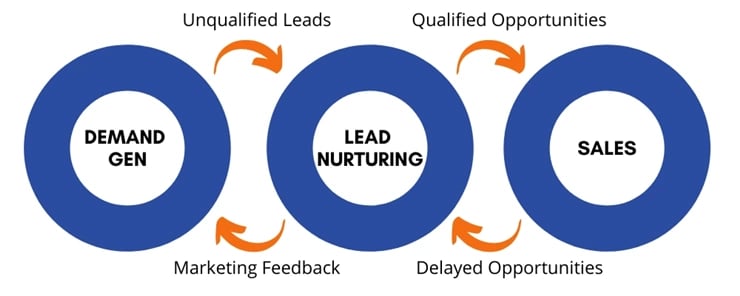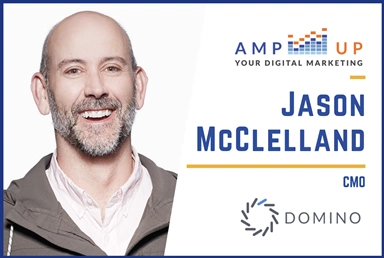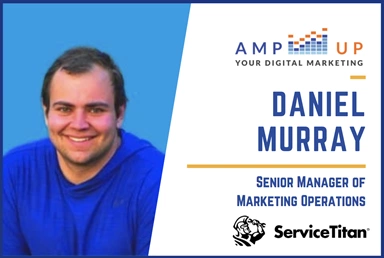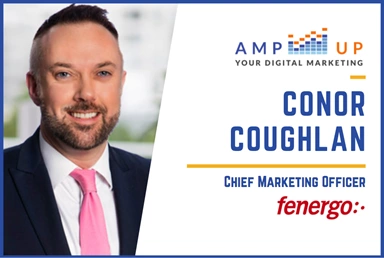Podcast
The ‘AMP Up Your Digital Marketing’ Podcast Presents:
The Benefits of Perpetual Demand Generation
In this episode of AMP Up Your Digital Marketing, Glenn Gaudet speaks with Kira Mondrus, SVP of Global Marketing at Tricentis. They sit down to discuss the benefits of perpetual demand generation marketing and how it can help grow your business. You’ll learn:
- Traditional campaign-based marketing is stymied by its need to find customers at just the right time.
- Perpetual demand generation, instead, engages prospects with ongoing messaging that allows them to find you when they need your product.
- Perpetual demand generation requires a heavy lift at first in the way of audience research, content creation, and brand advocacy, but the ongoing load is much lighter than with campaign-based marketing.
The traditional approach to marketing has a major flaw: It’s time-dependent. You can get the best message in front of the perfect customer, but if it’s not at the right time, your effort is wasted.
“You could be running a promotion on a tire sale, but if somebody doesn't have a flat tire, they have absolutely no reason to engage with you for your discount tires,” explains Kira Mondrus, SVP Global Marketing at Tricentis, a continuous testing platform for software providers.
But what if you could be there every time your customer has a question about tires? Surely, you’d be top of mind when they have the key question: Where can I replace my flat tire?
This ongoing engagement with the customer is called “perpetual demand generation.” Kira joined the AMP Up Your Digital Marketing podcast to talk about how she implemented perpetual at her previous company and how she and her team at Tricentis apply the strategy for a buyer-centric approach to marketing.
What Is Perpetual Demand Generation?
Compare perpetual demand generation to the traditional campaign-based approach to marketing. Campaigns are time-bound and, often, focused more on what the brand wants to say than on what the customer wants to hear.
“What happens when your Q1 campaign is over?” Kira asks. “If they're looking for that particular answer in Q2, they're not going to find you.”
With perpetual, you instead start with the personas you want to engage. “It all starts with persona and really having an acute understanding of who it is that you are selling to,” says Kira.
To identify personas, consider the following:
- Their pain points
- Interests and questions during the buyer journey
Then, examine how those pain points are addressed.

The deliverables to address the pains are the kinds of marketing you’re familiar with: things like content, events, display advertising, and digital marketing. Demand gen activities such as content, events, interactive campaigns, and direct response targeting bring in the leads that need to be sifted through and nurtured.
In the lead nurturing process, you can score, automate, measure, and reroute leads to qualify their status as a qualified opportunity for sales. Sales will then engage, qualify, negotiate, and ideally win the business.
But sometimes those leads are not quite ready, at which point an opportunity is delayed and possibly even returned to marketing. This is all part of an overall perpetual demand generation process.
Campaigns are the way marketing is taught, and the concept is ingrained in the work — but the industry has evolved, as it always has.
Kira says, “It will take time to think of perpetual as the new norm, the same way that it took time to think about automation as a must-have rather than a nice-to-have.”
How to Switch to Perpetual Demand Generation
Transitioning from traditional campaigns to perpetual may seem to present too big a hurdle for your team, but Kira says it’s worth it.
“It's a huge lift to get off the ground, but once it's running, we focus a lot on optimization and we have time freed up to do things like sales plays, a lot of enablement, getting the most out of our event programs,” she says, “because we're not constantly scrambling to get the next thing into market.”
You’ll face a lot of work upfront in terms of research and content (or deliverable) creation, but after that, it’s just a matter of tweaking and improving what you’ve created based on your audience engagement. Compare that with developing and launching a brand-new campaign every quarter.
Who You Need on Your Team
Your demand generation team needs both marketing expertise — the people who understand how to develop an email strategy and run digital marketing, for example — and content expertise.

The latter is someone who knows not only how to create and distribute content in a variety of formats (e.g. blog, white paper, and webinar), but also how to focus on which customer questions to address with each format and in each stage of the buyer journey.
“Having someone in content who can really discern [what the customer needs] is very important,” Kira stresses.
How to Measure Success Without Campaigns
In campaign mode, you can take data from a campaign, measure it against other campaigns, and call it a success or not. Your sales team also has an idea of how to approach prospects based on the campaign that hooked them.
How do you measure success when your marketing has no clear beginning and end dates?
Kira says her team focuses on pipeline contribution and revenue contribution as key metrics, and they rely on multi-touch attribution to track a prospect’s engagement. They analyze every stop on the buyer’s journey to determine which content was engaged and what actions the buyer took as a result.
It makes determining the ROI of any piece of content a little messy, because the buyer may not take a direct line through the funnel to get to your sales team. But it’s a much more comprehensive and accurate look at the effectiveness of your marketing efforts.
Kira has even redefined the funnel a little. Rather than tap into things like “awareness” and “interest,” her team considers how their audience interacts with marketing programs. Programs can:
- Engage. This gets people to the top of the funnel.
- Nurture and convert. This moves them into the opportunity stage.
- Accelerate. This turns opportunities into closed-won businesses.
“Each of those typically has different sets of tactics that go along with them as well as a different messaging focus,” she explains.
GaggleAMP is the first and leading employee advocacy platform of its kind. It allows organizations of all sizes and industries to reach their digital marketing potential by extending social media reach, boosting engagement, and driving leads.
Learn more below!

Ramin Edmond
Ramin Edmond is the former Content Strategist for GaggleAMP.








